GNYP Gallery
Berlin, DE - GalerieAdresse & Kontakt
Mittwoch bis Samstag: 12-18 Uhr Nach Vereinbarung.
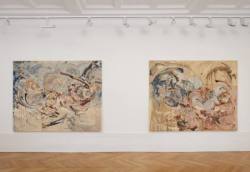
26.04.2024 - 15.06.2024
Wade Through Until the Waters Blue
-
Tonight Turns to Day 10.11.2023 - 23.12.2023
Tonight Turns to Day
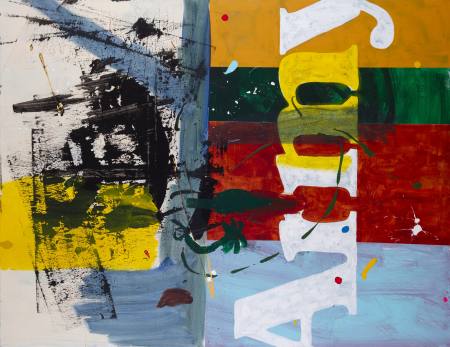
Ort: GNYP Gallery bis: 2023-12-23
Künstler: Charlie Alston
Thema: Die Galerie GNYP freut sich, mit "Tonight Turns to Day" die erste Einzelausstellung des amerikanischen Künstlers Charlie Alston in Deutschland zu präsentieren, die vom 10. November bis 29. Dezember 2023 zu sehen ist. Mit Hilfe popkultureller Elemente aus Comics, Marken und Werbung untersucht Alston die verschiedenen Einflüsse, mit denen er in seinem Leben konfrontiert ist. Als Weltbürger, der vielen sozialen und kulturellen Narrativen ausgesetzt ist, setzt sich der Künstler konzeptionell und formal mit der Populärkultur im Allgemeinen auseinander. Er lässt sich unter anderem von Nachkriegszeitschriften über und für Afroamerikaner wie Jet inspirieren und schafft collagen-artige Gemälde, in denen Figuration und Abstraktion ineinander übergehen. Sein Interesse gilt der Schattenzone, dem Bereich, in dem die Unklarheit regiert und Bedeutungen Gestalt annehmen.
-
Our Country: APY Lands 14.09.2023 - 03.11.2023
Our Country: APY Lands

Ort: GNYP Gallery bis: 2023-11-03
Künstler: Kukika Adamson, Nyunmiti Burton, Umoona Collaborative, Yaritji Heffernan, Tuppy Goodwin, Sandra Pumani, Rhoda Tjitayi
Thema: Die GNYP Gallery hat das große Vergnügen, Sie zur Eröffnung von Our Country: APY Lands einzuladen, einer Gruppenausstellung mit Künstler:innen der First Peoples of Australia in Berlin, die vom 14. September bis 7. Oktober 2023 zu sehen ist. Start: Donnerstag, 14. September - 17-20 Uhr Mehr Informationen auf unserer Website Öffnungszeiten: Thursday 12:00 - 18:00 Friday 12:00 - 18:00 Saturday 12:00 - 18:00
-
Richie Culver & Umut Yasat I The Path of Least Resistance 02.06.2023 - 28.07.2023
Richie Culver & Umut Yasat I The Path of Least Resistance
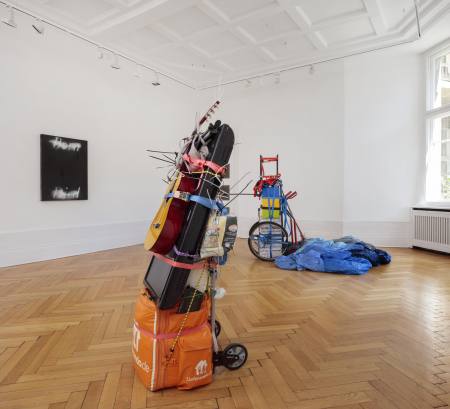
Ort: GNYP Gallery bis: 2023-07-28
Künstler: Richie Culver, Umut Yasat
Thema: GNYP Gallery has the great pleasure in inviting you to the opening of Richie Culver & Umut Yasat: The Path of Least Resistance, which will take place on Friday, June 2, 2023, between 5 and 8 pm at Knesebeckstr. 96, 10623 Berlin. Please find more information on our website
-
Life on a Pale Horse 10.03.2023 - 15.04.2023
Life on a Pale Horse
Ort: GNYP Gallery bis: 2023-04-15
Künstler: Rob Ober
Thema: GNYP Gallery has the great pleasure in inviting you to the opening of Life on a Pale Horse, the first solo exhibition of the American artist Rob Ober in Europe, on view from March 10 until April 15, 2023. The opening will take place on Friday, March 10, 2023, between 5 and 8 pm at Knesebeckstr. 96, 10623 Berlin. At 7 pm the artist and the art historian João Gabriel Rizek will lead a walkthrough of the exhibition.
-
Maria Calandra: Outskirts of Infinity 27.01.2023 - 25.02.2023
Maria Calandra: Outskirts of Infinity

Ort: GNYP Gallery bis: 2023-02-25
Künstler: Maria Calandra
Thema: GNYP Gallery has the great pleasure in inviting you to the opening of Outskirts of Infinity, the first solo exhibition of the American artist Maria Calandra in Europe, on view from December 7 to January 14, 2023. The opening will take place on Friday, January 27, 2023, between 5 and 8 pm at Knesebeckstr. 96, 10623 Berlin.
-
whistling dune 07.12.2022 - 14.01.2023
whistling dune
Ort: GNYP Gallery bis: 2023-01-14
Künstler: Kaifan Wang
Thema: KAIFAN WANG in conversation with Dominic Eichler Artist Kaifan Wang (b.1996) grew up in Hohhot, a predominantly Chinese city of around four million people and for millennia a gateway to the grasslands of inner Mongolia and beyond them, the fabled Gobi desert. Like other cities on trading routes, Hohhot still bears traces of cultural exchange and flows across ethnicities and religions. From a young age, Wang studied traditional Chinese painting before moving to Beijing, where he encountered contemporary art. In 2016, he moved to Berlin to further his studies and was at first unable to paint anything. But during the pandemic, he started painting anew. This time his head was full of questions and a new understanding of himself and the possibilities of the medium. In the led up to his debut solo exhibition ‘Whistling Dune’ (2022) at Gnyp Galerie, Berlin, the following exchange ensued. Dominic Eichler: ‘Whistling Dune’ is a great title. It has a mystic ring to it. I am reminded tangentially of writer Paul Bowles’ text ‘The Baptism of Solitude’ (1957) about experiencing the dunes of the Sahara. He wrote: “Here, in this wholly mineral landscape lighted by stars like flares, even memory disappears; nothing is left but your own breathing and the sound of your heart beating. A strange, and by no means pleasant, process of reintegration begins inside you, and you have the choice of fighting against it, and insisting on remaining the person you have always been, or letting it take its course.” Does your title have to do with where you are from? Kaifan Wang: I’m glad you like it. One day, when I was walking along the streets of Berlin, a gust of wind blew sand in my eyes. It was only slightly irritating, but it reminded me of uncomfortable childhood memories of sandstorms in my hometown. The oil painting The Sand Blew Into My Eyes I (2022), was inspired by these memories. Hohhot is a city with a long history, but you can hardly find traces of it now as urban development and new buildings undermine old legends and stories. I didn’t realise that the dust storms were natural disasters. I was just drawn to haze and the unknown. DE: Have you ever been to the interior grasslands or the desert? KW: I prefer the idea of deserts to grasslands. But actually I have always felt alienated from the natural environment, not only because I grew up in the city but also because I have allergies and dislike bugs. This also made me realise I am not a real Mongolian. I think that’s also why I like abstraction, because lot of things that I can’t experience or wish to talk about directly can be embodied in an abstract way. DE: Do you have any views about how much or how little you wish your biography to be part of the understanding of your art? Some artists prefer to leave their biography to one side or even make up stories and identities. KW: My works relate to my memories and life experiences. I hope to express a kind of struggle, reconciliation, and self-created sense of security through painting. My paintings often start with violent collisions, but are slowly covered and summarised by careful lines and moods. Some of the abstract figures in my paintings resemble the shape of dunes. The rhythm in my pictures is also often reminiscent of the wind, and the sound of the sand caused by the wind. I don’t want to presume to describe the wind; it has its own secret existence. When people ask me about my work, I feel like a cloud of dust. It is the wind that takes away the dust. The dust itself is passive. My work is inspired by where I grew up, the people I meet, and the books I read. They are the wind and I am the sand. DE: Can you describe your process to me? KW: To make the paintings in the exhibition, I used sponges as a painting tool. In the beginning, I cut up old mattresses. Some were left behind by other Chinese students who went home because of the pandemic. I also made some soft sculpture using these mattresses as material inscribed by the weight of their bodies (Wall Woodpecker series, 2022). Later I just used dishwashing sponges. I love the texture of sponges and the effect they produce. When they are full of water, they are soft and flow like painting with ink, and when they are dry, they can express the strength. I like vibrant colours like in Hindu imagery. For Mongolians, blue and white represent purity and holiness. Red, for me, represents a force. For scale, I choose a size that fits my work space and my body. I often combine different images on my iPad to test different colours before starting. I believe that art is created in a fragile balance between the spirit of the Dionysus, the God of wine and Dance, and the Apollo, the God of the sun. A painting itself is a crisis and uncertainty, so I have to first determine some objective conditions, such as size, colour, composition. DE: How do your studies in traditional Chinese painting relate to what you do today? KW: Learning traditional Chinese painting and calligraphy is a process of imitation and repetition. I once studied Jackson Pollock and Cy Twombly’s work and compared it with the modern calligrapher Wang Dongling. Chinese and Western abstract paintings are completely different. The rational spirit of Western abstract art is to rebel against tradition, while Chinese art is always been passed down first and then developed. I find myself somewhere in the middle ground in terms of culture and identity. I have been thinking about simplicity and brutality as the most effective qualities to express this. Art is a great tool and channel for me to do this. I think the rebellious spirit of abstract art is necessary. My real distaste is anything that makes it too easy to get pleasure and satisfaction. Perhaps my latest work maybe isn’t as visually aggressive as other young painters like Daisy Parris or as provocative as Andi Fischer, but it has its own undercurrents. The act of painting carries resonances for me, including muscle memory. DE: Isn’t it true that everyone’s subjectivity entails hybridisation, irreconcilable parts, and cross-cultural flows not of our making? I’m not sure we can control this even if we wanted to... KW: I agree with what you said, we cannot determine cultural flows. Intercultural fusion and even cultural bullying are both inevitable. When I first came to Germany, I couldn’t paint and focused on other mediums. I also tried to understand how to make a ‘bad painting’ and use ‘dirty colours’ and looked at Postwar German painting. The most subversive notion for me was to Kaputt Machen – smash it all up. But lately, I have been just trying to relax. It is increasingly difficult to distinguish between what is ours and what is foreign. DE: Can you tell me about your interest in words and slogans? I know you have made an abstract wall drawing and some paintings that grew out of words, and I see your notebook on your desk is in constant use. Why does it say your name and ‘Friedhof’ on it? KW: I made it myself. I like to collect slogans, epitaphs, slogans and advertisements produced in different cultural and political eras with the same theme as the one I want to explore. In China, there are official slogans everywhere, declaring the core values proposed by the central government. In Berlin, instead we have graffiti, and handwritten venting on posters. I like the word Friedhof – cemetery. I was fascinated by Berlin’s cemeteries with trees and flowers right in the middle of the city. We don’t have this in China. I was scared of them. On the grave of a poet I found a sentence he wrote scribbled with a ball-point pen on the back of the tombstone ‘Auch Worte haben ihre Zeit… zu wissen, dass sie ein Mal da Dein werden, ist viel – Even words have their time... to know that they will be yours one day is plenty.’ I made a painting of it. Language and words can cause misunderstandings. I love the biblical description of the Tower of Babel. Even communication between people with the same mother tongue can lead to misunderstandings, let alone people of different languages. Amplifying this misunderstanding is like amplifying the differences between individuals. As William Kentridge said: ‘Long live the misunderstanding.’ Dominic Eichler is a Berlin-based freelance writer and musician. Since 1995, he has written about contemporary art for numerous international magazines, museums, institutions and galleries. In the 2000s, he was a contributing editor of frieze magazine. In 2005, he was awarded the German AdKV prize for art criticism. He is currently working on a novel, and a book of collected writings about art.
-
Not Quite Paradise 08.10.2022 - 26.11.2022
Not Quite Paradise
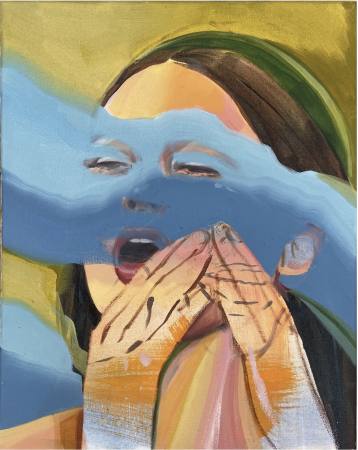
Ort: GNYP Gallery bis: 2022-11-26
Künstler: Lizzy Lunday
Thema: GNYP Gallery has the great pleasure in inviting you to the opening of Not Quite Paradise, the first solo exhibition of the American artist Lizzy Lunday in Berlin, on view from October 8 to November 26, 2022. The opening will take place on Saturday, October 8, 2022, between 5 and 8 pm at Knesebeckstr. 96, 10623 Berlin.
-
Better Luck Next Time 23.07.2022 - 27.08.2022
Better Luck Next Time

Ort: GNYP Gallery bis: 2022-08-27
Künstler: Ariane Heloise Hughes
Thema: GNYP Gallery has the great pleasure in inviting you to the opening of Better Luck Next Time, the first solo exhibition of the English-Australian artist Ariane Heloise Hughes, on view in Berlin from July 23 to August 27, 2022. The opening will take place on Saturday, July 23, 2022, between 6 pm and 9 pm at Knesebeckstr. 96, 10623 Berlin. The British-Australian artist Ariane Heloise Hughes describes her work as intricate, sensual, absurd. Appropriating often banal and unwittingly familiar narratives into a visual vernacular full of unusual and exaggerated forms, Hughes’ surrealistic depictions create a world that aims to draw the viewer in, engaging them in a process of active looking and contemplative thought. Through anachronistic objects and elements, distortions of scale and uses of colour, the artist usurps her reflections of now into ostensibly traditional and curious settings. By simultaneously drawing attention to the artifice of the image while presenting it as truth through naturalistic renderings, she is reflecting on the function of social media. Engaging deeply with the aesthetics and history of surrealism, Hughes’ paintings draw on and exaggerate the interplay between the real and the unreal. Hughes holds a BA in Painting from Camberwell University.
-
We Were Always Alone 09.06.2022 - 16.07.2022
We Were Always Alone
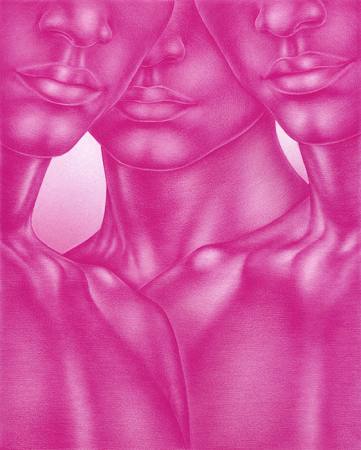
Ort: GNYP Gallery bis: 2022-07-16
Künstler: Aiste Stancikaite
Thema: GNYP Gallery gladly announces its second solo show with the Lithuanian, Berlin-based artist Aiste Stancikaite. The opening is taking place on June 9, 2022, between 6 and 9 pm.
-
Television Paintings 1977-1984 28.04.2022 - 01.06.2022
Television Paintings 1977-1984
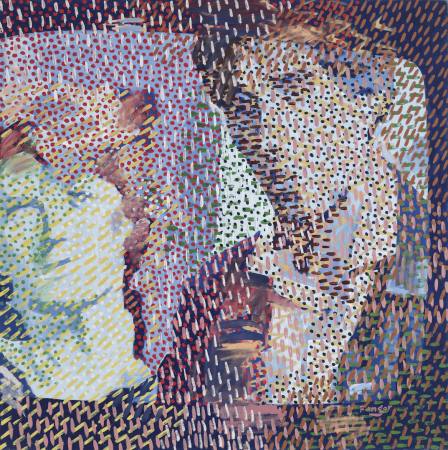
Ort: GNYP Gallery bis: 2022-06-01
Künstler: Wojciech Fangor
Thema: OPENING: APRIL 28, 2022, 6-8 PM
-
Autofiction Preface 07.01.2022 - 14.01.2022
Autofiction Preface
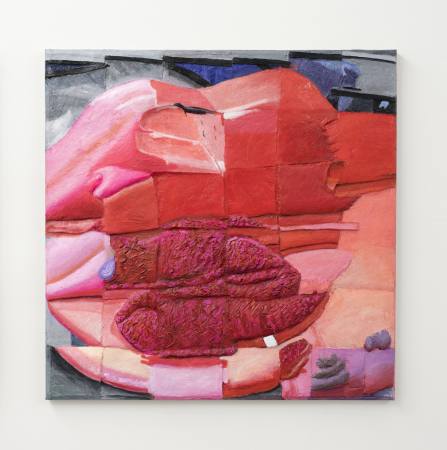
Ort: GNYP Gallery bis: 2022-01-14
Künstler: Gina Beavers
Thema: Vielleicht kann man sagen, dass sich Authentizität und Exzess in Beavers neue Bildern für diese Ausstellung neu ordnen. Feststellen lässt sich eine Zunahme an kompositorischen Exzessen mit diversen Bildebenen, die sich miteinander verzahnen. Das, was sich dort verbindet, hat sich allerdings abgelöst vom fotografischen Quellmaterial. Vielmehr plündert die Künstlerin inzwischen den Motivschatz, der sich in ihrer mehrjährigen Maltätigkeit angesammelt hat. Couches, Sneakers, Lippen, aber auch Nägel oder ein Albumcover der neuseeländischen Band Broods werden wechselseitig miteinander gekreuzt oder ineinander verschachtelt, wodurch sie als persönliche Chiffren funktionieren. Diese Chiffren stellen einzelne Bilder mit anderen Arbeiten der Ausstellung ebenso in Korrespondenz wie mit älteren Bildern von Beavers, in denen sie anders phrasiert und kontextualisiert wiederkehren. In gewisser Weise funktioniert jede dieser Chiffren wie das ‚Ich’ in Autofiction: Es dreht, wendet, wandelt und bricht sich, bleibt aber dennoch eine mysteriös wandelbare Entität. Moritz Scheper
-
I Will Heal 13.11.2021 - 08.01.2022
I Will Heal
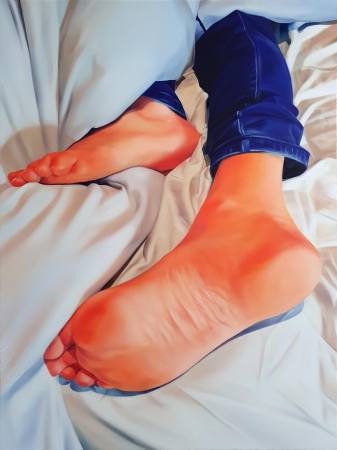
Ort: GNYP Gallery bis: 2022-01-08
Künstler: Christopher Hartmann
Thema: Christopher Hartmann I I Will Heal Eröffnung, November 13, 16-20 Uhr
-
Nobunaga 02 08.10.2021 - 30.10.2021
Nobunaga 02
Ort: GNYP Gallery bis: 2021-10-30
Künstler: Susumu Kamijo, Koichi Sato
Thema: GNYP Gallery has the great pleasure of inviting you to the opening of Nobunaga 02, the two-person exhibition of the New York-based Japanese artists Susumu Kamijo and Koichi Sato in our gallery rooms in Berlin. The opening will take place on Friday, October 8, 2021, between 3 pm and 7 pm at the Knesebeckstr. 96, 10623 Berlin, in compliance with the current distancing and hygiene regulations. Susumu Kamijo will be present at the opening. An artist talk will be held at 6 pm.
-
Paradise à la carte 03.09.2021 - 03.10.2021
Paradise à la carte
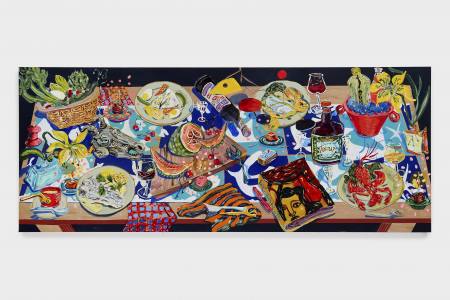
Ort: GNYP Gallery bis: 2021-10-03
Künstler: Kate Pincus-Whitney,
Thema: GNYP Gallery is delighted to announce the first solo exhibition of the American artist Kate Pincus-Whitney in Berlin. Kate Pincus-Whitney intermingles in her art the three basic human needs: food, security, and love, something she came to envision through her upbringing in which the kitchen, as a physical and emotional space, played a very important role. In her canvases, the many symbols attached to sharing a meal and to the theater of the dinner table are mobilized to establish a colorful and dense relationship with contemporary concerns of cultural identity. At the same time, by doing this, Pincus-Whitney places her work in a dialogue with the long tradition of representation and meaning of food in the history of art. The exhibition will open on September 3 from 3pm to 7pm, and be on view until October 3, 2021. A second opening coinciding with an Artist Talk will take place on September 18, 2021.
-
Jocelyn Hobbie: New Paintings & Works on Paper 29.04.2021 - 12.06.2021
Jocelyn Hobbie: New Paintings & Works on Paper

Ort: GNYP Gallery bis: 2021-06-12
Künstler: Jocelyn Hobbie
Thema: GNYP Gallery is delighted to announce the first solo exhibition with the American artist Jocelyn Hobbie. Showing recent paintings and works on paper, the exhibition opens on Thursday, April 29th, 2021, and is on view until June 12th, 2021. If you are planning to join us for the opening or to visit the exhibition later on, please contact the gallery via E-Mail to book an appointment. Visitors must present a negative COVID-19 test issued within the last 24 hours, and wear an FFP2-mask, in line with the Berlin Senate regulations.
-
Alexandra Karakashian I unfolding pause 26.03.2021 - 24.04.2021
Alexandra Karakashian I unfolding pause
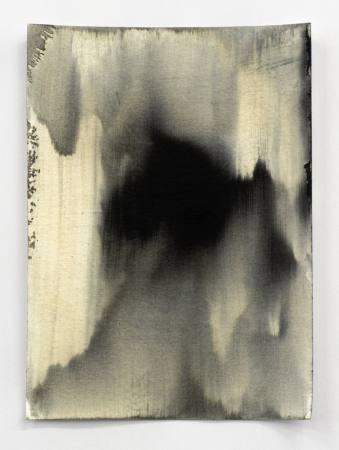
Ort: GNYP Gallery bis: 2021-04-24
Künstler: Alexandra Karakashian
Thema: GNYP Gallery is delighted to announce its first solo exhibition with the South African artist Alexandra Karakashian. The exhibition unfolding pause is on view from March 20th until April 24th, 2021. Alexandra Karakashian was born in 1988 in Johannesburg, South Africa, and is currently based in Cape Town. She works mainly with paintings, or with sculptures and installations made from deconstructed, unframed paintings. Painted canvases and cloths are presented in surprising ways, sometimes unsupported, framed in reverse or transformed into a sculpture or installation. In consideration of the current pandemic regulation the gallery reopens for the public from March 9th, 2021 by appointment and in compliance with the current distancing and hygiene regulations.
-
Geoponika 13.02.2021 - 06.03.2021
Geoponika
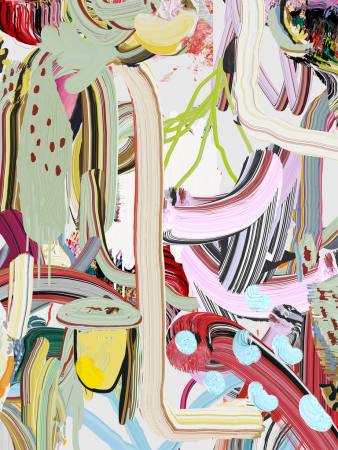
Ort: GNYP Gallery bis: 2021-03-06
Künstler: Otto Ford
Thema: GNYP Gallery is delighted to announce the second solo exhibition with the British artist Otto Ford in our gallery. The exhibition Geoponika is on view from February 13th until March 6th, 2021. In consideration of the current pandemic regulation the gallery is currently closed and hopes to be open again for the public any time soon in compliance with the current distancing and hygiene regulations. Before that the exhibition can be viewed online on our website.
-
The Anarchy of Silence 23.01.2021 - 06.03.2021
The Anarchy of Silence
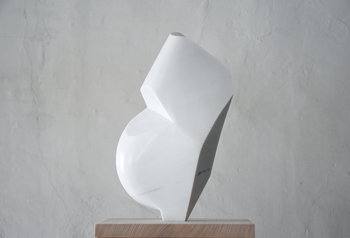
Ort: GNYP Gallery bis: 2021-03-06
Künstler: GNYP Gallery is delighted to announce the first solo exhibition of the Swiss artist Flurin Bisig in our gallery. The exhibition can be seen on our website from Saturday, January 23rd, 2021 and will be on view until Saturday, March 6th. In consideration of the current pandemic regulation the gallery will be open again for public from Tuesday, February second, 2021, in compliance with the current distancing and hygiene regulations. If you are planning to visit, don’t forget your mask, so we can ensure a pleasant and safe stay for everyone.
Thema: GNYP Gallery is delighted to announce the first solo exhibition of the Swiss artist Flurin Bisig in our gallery. The exhibition can be seen on our website from Saturday, January 23rd, 2021 and will be on view until Saturday, March 6th. In consideration of the current pandemic regulation the gallery will be open again for public from Tuesday, February second, 2021, in compliance with the current distancing and hygiene regulations. If you are planning to visit, don’t forget your mask, so we can ensure a pleasant and safe stay for everyone.
-
Flower of Fog 20.01.2021 - 26.02.2021
Flower of Fog
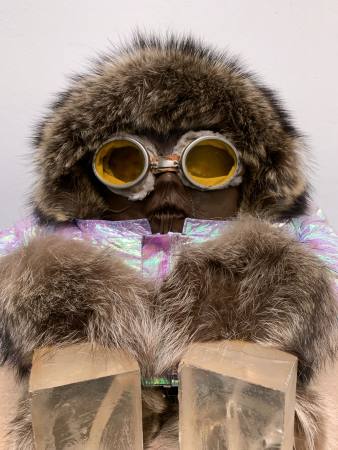
Ort: GNYP Gallery bis: 2021-02-26
Künstler: Denis Savary
Thema: Es ist interessanter, einen Apfel auf dem Mond zu finden als einen Mondstein. Die subtile Absurdität dieses Satzes, den der deutsche Komponist Karlheinz Stockhausen formulierte, könnte man als bloße Albernheit abtun. Ohne zu ahnen, dass er sich als Komiker ausgeben wollte—immerhin war er ein Leben lang ein Theatermann—hatte Stockhausen wahrscheinlich den Wunsch, das Vertraute in unbekanntes Terrain einzubringen, es mit ihm kollidieren zu lassen und so etwas Unerwartetes zu schaffen, eine Haltung zu aktualisieren, die man am ehesten mit den Surrealisten verbindet. Es wäre nicht zu weit hergeholt zu behaupten, dass Denis Savary (geb. 1981), der seine erste Einzelausstellung in der GNYP Gallery präsentiert, mit seinen Mitteln und unter dem Druck unserer Zeit in derselben Tradition steht. Allerdings sind der Apfel und der Mond nicht mehr so leicht erkennbar wie zuvor. Die Ergebnisse wiederum können immer noch genauso faszinierend sein. Anfangs ist das Szenario, sei es bekannt oder außergewöhnlich, nicht mehr klar. Es bietet keinen Hintergrund mit einer klaren Logik, von der aus wir das Werk interpretieren können. Mit verschiedenen Materialien, von Stoffen über Metall und Blattgold bis hin zu Bio-Resin, verweist Savarys Werk auf mehrere Orte von nahezu allen Kontinenten und gleicht sie somit aus. Während zum Beispiel die vier "Hanoï"-Werke nicht nur durch ihren Namen, sondern auch durch ihre organischen Winkel, die sich wie unkontrollierte Flammen ausbreiten, einen deutlichen Hinweis geben, neigen andere Werke zu einem ambivalenten Verhältnis zur Geografie. Das ist der Fall bei "Öyvind", benannt nach Öyvind Fahlström, einem Multimedia-Künstler, der in São Paulo als Sohn skandinavischer Eltern geboren wurde. Die unheimliche Figur visualisiert das Zusammentreffen verschiedener Orte, Einflüsse und Traditionen mit verschiedenen Zeiten—hier durch das Tragen eines kitschigen Mantels und einer alten Gletscherbrille. Eine deplatzierte Mumie aus den Tiefen der Zeit. Andere Arbeiten folgen einer ähnlichen Logik, treiben sie aber noch weiter und eröffnen uns so, was wir aus ihnen ziehen können. Im Gegensatz zu seinem Zeitgenossen Frans Post, einem begeisterten Reisenden, hat Rembrandt wahrscheinlich nie einen Ameisenbären gemalt. Wenn man jedoch einen Ameisenbären nach dem großen holländischen Meister benennt, wie Savary es tut, dann verschiebt sich unser Bewusstsein für Geografie, Autorschaft und Geschichte und führt unser Verständnis dieser Dinge ebenfalls in unbekannte Gefilde. Ein Ameisenbär in einer Kunstgalerie? Der Raum, in dem dieses seltsame Tier vor uns erscheint, wird in Frage gestellt und bringt sowohl Institutionskritik als auch einige Überreste des Kolonialismus ins Gespräch, was auf ein anderes Interesse Savarys hinweist, nämlich die Idee der Moderne als Projekt, zusammen mit ihren Sünden, Mängeln und, so hofft man, ihren Versprechen. Während Tiere, die nach Künstlern benannt sind, einen kolonialistischen Beigeschmack tragen und zu einem Gespräch über das Zentrum und die Peripherie, das Etablierte und das Exotische, die Natur und die Künstlichkeit einladen, deutet die abgenutzte Concorde ihrerseits auf das Scheitern anderer Aspekte des modernen Projekts hin, nämlich seines technologischen Antriebs und seiner utopischen Arroganz. Statt auf die Kadaver oder Ruinen dieser modernen Embleme zurückzugreifen, präsentiert Denis Savary sie durch sanfte Verschiebungen. Indem er ihre Namen oder Farben ändert, macht er sich nicht nur Gedanken darüber, was schief gelaufen ist—die Concorde fliegt nicht mehr, und mehrere Ameisenbärenarten sind vom Aussterben bedroht—sondern vermittelt auch eine vielschichtige Darstellung, die vor allem das Scheitern einiger Vorhaben des letzten Jahrhunderts verdeutlicht. Allerdings nicht ohne sie auf ihre eigene Art und Weise auch schön zu präsentieren. Manchmal ist es eben interessanter, einen Frosch oder ein Flugzeug in einer Kunstgalerie anzutreffen, als in ihrem natürlichen Umfeld. João Gabriel Rizek
-
Aistė Stancikaitė: Stories, human 12.12.2020 - 09.01.2021
Aistė Stancikaitė: Stories, human

Ort: GNYP Gallery bis: 2021-01-09
Künstler: Aistė Stancikaitė,
Thema: Die GNYP Gallery freut sich, ihre nächste Einzelausstellung mit dem litauischen Künstler Aistė Stancikaitė bekannt zu geben. Hauptsächlich fertigt sie monochromatische Zeichnungen an, in denen sie die Wahrnehmung der Realität durch den völligen Perfektionismus ihrer Herangehensweise herausfordert. Ein wesentlicher Teil ihrer Arbeit beschäftigt sich mit der menschlichen Figur, wobei die Anatomie und Persönlichkeit der dargestellten Charaktere sowohl als vertraute Bekannte als auch als fiktive Fremde auftreten. Besuchen Sie uns am 12. Dezember von 11 bis 19 Uhr zur Eröffnung. Die Ausstellung ist bis zum 9. Januar 2021 zu sehen.
-
Everything you touch 14.11.2020 - 09.01.2021
Everything you touch
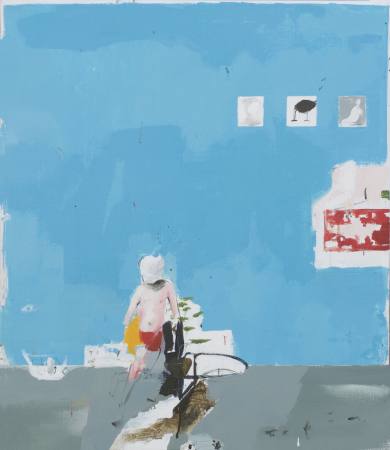
Ort: GNYP Gallery bis: 2021-01-09
Künstler: Brian Harte,
Thema: Die GNYP Gallery freut sich, ihre nächste Einzelausstellung mit dem irischen Maler Brian Harte bekannt zu geben. Harte wurde 1978 in Irland geboren und lebt und arbeitet in County Tipperary. Eines der Hauptmerkmale von Hartes Gemälden ist sein kühner Umgang mit Farbe und der unbestimmte Zustand der Figuren auf den Leinwänden, welche sich in einem Stadium zwischen skizzenhaft und vollendet befinden. Die Eröffnung findet am 14. November von 11:00 bis 19:00 Uhr unter aller notwendigen Hygienebedingungen und Abstandregelungen statt. Die Ausstellung läuft bis dem 9. Januar 2021.
-
Regarding Me Regarding You 10.09.2020 - 01.11.2020
Regarding Me Regarding You
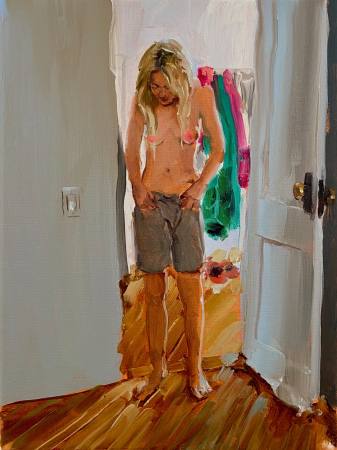
Ort: GNYP Gallery bis: 2020-11-01
Künstler: Jenna Gribbon
Thema: GNYP Gallery is pleased to announce its next solo show with the painter Jenna Gribbon. The American artist was born in 1978 in Knoxville, USA, and lives and works in Queens, New York. Gribbon’s paintings of nudes pay homage to the moment when light touches skin. Her lush brush strokes capture her friends, son and girlfriend in intimate portraits. This is her first solo exhibition in Europe. Exhibition: September 10th - October 24th, 2020 Opening: September 10th, 11 am-8 pm
-
Danica Lundy: bleach cologne 16.05.2020 - 27.06.2020
Danica Lundy: bleach cologne
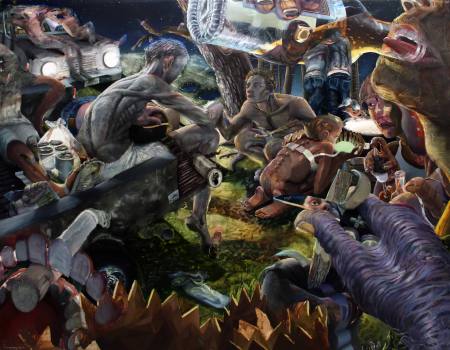
Ort: GNYP Gallery bis: 2020-06-27
Künstler: Danica Lundy
Thema: The motion is ceaseless. There is a lot going on, everywhere: tiny details, menacing gestures, surrealistic choreographies. It seems like the whole world is compressed in these canvases, squeezed in so little space. The perspective keeps shifting and the eye can’t find a resting spot. What’s going on here? Hastily, we look for something, not yet knowing what. We engage with the possible meaning of these paintings – to no avail, at first. Maybe we need to look closer, or from a distance. There must be an answer; the clue might be lying somewhere – the ultimate interpretation for what looks like a dream, a hallucination, perhaps just an ordinary event –, it’s just a matter of finding it. But we stall. We feel claustrophobic, overwhelmed. And then the motion starts all over again. It wouldn’t be an exaggeration to say that Danica Lundy’s paintings try to embrace a whole culture. From her influences – ranging from Michelangelo’s sculptures to Kara Walker, TV series, and beyond – to her palette – with its radiance of darker tones –, that is, from her starting points and intentions to the form of her works, Lundy’s art is about our shared world in all its complexity. It seems that, if not everything, there’s a lot there: sexual tension, contemporary introspection, pop culture, the old masters’ tradition, and, obviously, art itself. Immersed in this uncontrolled whirlwind of references, Lundy faces them relentlessly, paying homage to all she encounters through her cunning technical expertise. Nothing is left behind; hence our wandering gaze. Nonetheless, even when the motion of colours, objects, and moods in Lundy’s paintings reminds us that our culture is made of constant tension; even when this tension unfolds in a suffocating fashion and it seems that there is no way out, then, at this very moment, the artist gives us a helping hand: right there, reflected in the shade of the desk lamp we see her, painting, in complete control of the situation, apart in her own world. A world that is also our world, in all its chaos, confusion and beauty. We are in this together. Broadly speaking, there are two types of artistic practice. On one hand, there are works whose ultimate purpose is to remind us of the gruesome reality around us, works whose premise is to wake us up through shock. Such was the poetics of, among others, the Dada movement. On the other hand, there are artistic practices that tries to make us forget about the outside world by pushing us for a hedonistic plunge into the endless world of colours and sublime attractiveness. Think of Yves Klein, for instance. There is, however, a third way, a mixture of these two tendencies. It operates by showing us that however strange, there is interesting – and even beautiful – things in our everyday struggles. It brings awakening through stunning detail and gorgeous formulations, not by violent thuds (although that may arouse at some point). That’s where Danica Lundy’s work is situated. The hint provided by her paintings, if there is ever one, is that beauty and madness and the menacing rhythm of our contemporary world are intertwined. By accepting the chaos, we accept our condition, as depicted in these canvases. by João G. Rizek
-
Umut Yasat: 24/11 17.01.2020 - 07.03.2020
Umut Yasat: 24/11

Ort: GNYP Gallery bis: 2020-03-07
Künstler: Umut Yasat
Thema: We are excited to invite you to the opening of our next exhibition with Umut Yasat (b. 1988), a German artist with Turkish background. To contemplate the work of Umut Yasat is to contemplate a paradox, or indeed a few. To begin with, though we see several structures in this exhibition – the artist’s very first solo show –, all of them are part of a single, unique work: Der Stapel, or The Stack (always in singular form), each divided by a number. An ongoing and robust project initiated in 2014 and intended by Yasat (b. 1988) to be kept until the end of his life, Der Stapel is formed, as the artist puts it, with what life gives him, whether they are objects filled with feelings or completely trivial leftovers. What he seeks when he piles them together is an exploration to their inner personality through a radical change of their inner meanings, even an access to their inner beauty – a way to access eternity through what is most transitory. Time is not only what we need to properly absorb the several details in Der Stapel. Time is what they are all about. But appearances can be deceiving. These awkward assemblage of materials, scattered pieces from ordinary life – such as plastic items, pieces of furniture, cardboard, drawings, maps, wheels, sheets of paper from the artist’s analog and digital mailbox, old electronic systems, and much, much more –, although seemingly incongruent, these hectic structures are, in fact, governed by a very solid idea, one that betrays the first impressions that one may have at first glance. In the midst of all the chaos formed by the clashing of materials one finds a well-designed composition, something established by an artist very acute to his own beliefs and aesthetic principles – in Umut Yasat’s work, the anarchic surface betrays a solid principle. Limited by the artist own height and controlled by a series of calculations conceived to lay them mobile – integrating the base to the structure, mediating it to the rest, thus continuing a tradition established by Brâncuși almost a century ago –, the meticulousness of the construction of Der Stapel, with its clear balance, brings to mind the verse by Stefan George: “Höchste Strenge ist zugleich höchste Freiheit”, highest rigor is at the same time highest freedom. For an artist as Yasat, accustomed with paradoxes, for someone who knows that art, as life, is full of ambiguities and sharp edges, nothing more natural than having a painter – not a sculptor – as a role model. Roman Opałka (1931 – 2011) inspired Yasat with his series 1965/1-∞, in which the Polish- French artist intended to visualize the continuum of time by counting on canvas, writing it down numbers from one to infinity, throughout his life. A project inevitably destined to fail, it nonetheless proved that however imperfect or chaotic, nonsensical and sometimes violent, life is about the process, not properly the final result, and art rings more powerfully when it acknowledges this, when it strives to organize what cannot be organized, as does Yasat’s Der Stapel. Once again, for an artist accustomed with paradoxes, it probably wouldn’t sound false to call these curious structures self- portraits. Of Umut Yasat and of our time. J.G. Rizek Umut Yasat (b. 1988) lives and works in Karlsruhe, Germany. Between 2009 and 2015 he studied in the Staatliche Akademie der Bildenden Künste in Karlsruhe with Gustav Kluge, Jonas Burgert and Marcel van Eeden. He started to work on Der Stapel in 2014. At first this process encompassed tiding all of the artist’s previous works together and then it evolved into the agglomeration of not only works of art but also several everyday objects - both meaningful and trivial. Yasat works on these sculptures until they reach his own height and to him they present a way to visualize time.